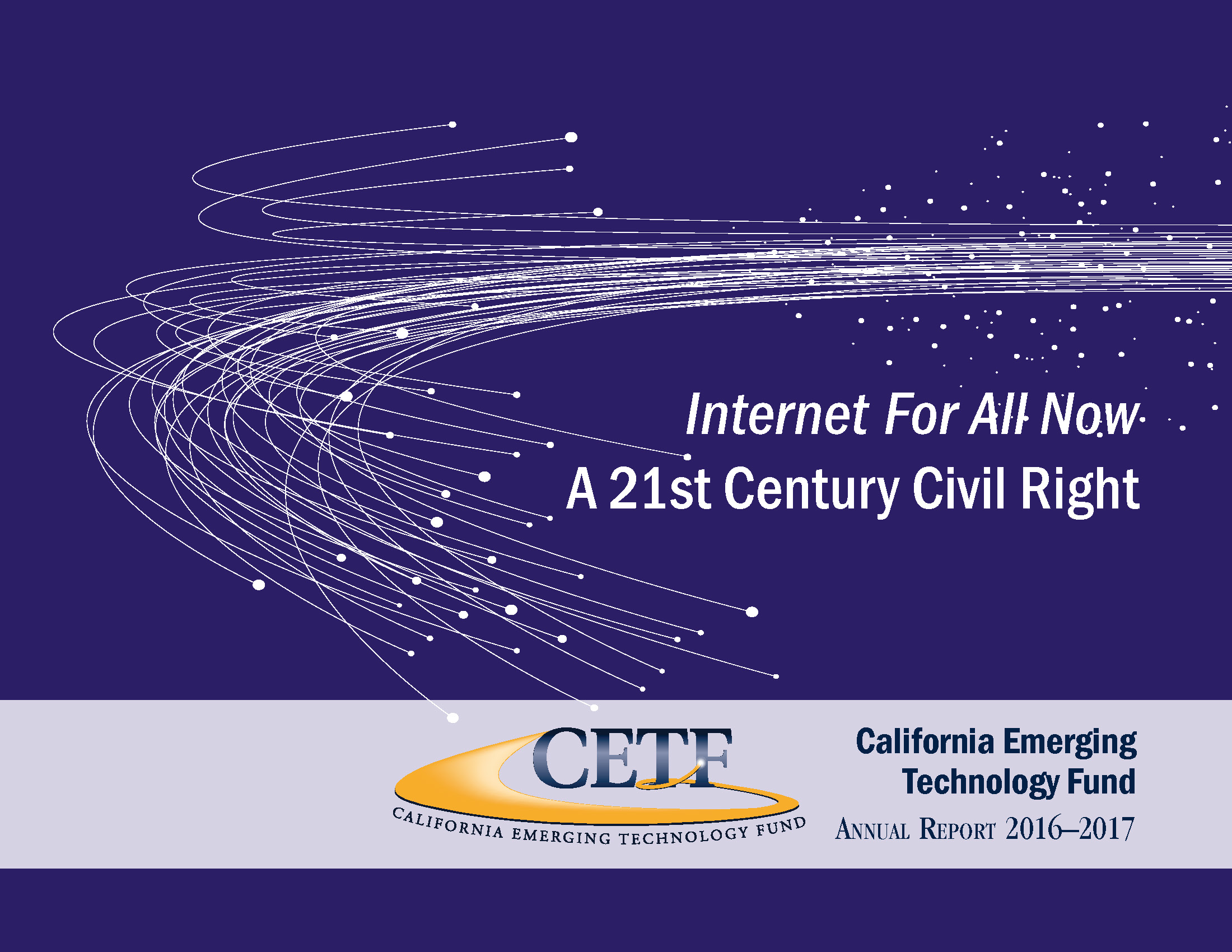Internet for All Now — A 21st Century Civil Right
Although California is a powerhouse of technology and innovation, the Digital Divide is a persistent challenge for rural communities and low-income neighborhoods. While the state has made significant progress since 2008 in increasing home broadband use from 55% to 84% of all households, the sad news is that too many households remain stuck on the wrong side of the Digital Divide. And, the gulf between the “digital haves” and “digital have-nots” is the greatest for the most disadvantaged residents: while 16% of the overall population is not connected at home with high-speed Internet service, 32% of low-income households, 31% of Spanish-speaking families, 29% of people with disabilities, 37% of adults without a high-school diploma, and 44% of seniors remain unconnected.
Further, higher percentages of disadvantaged residents than the general population are connected at home only with a smartphone. While smartphones are marvelous devices that enable access to an amazing amount of information online, it is difficult for a student to do homework or an adult to acquire workforce skills or apply for a job using only a smartphone. Those who are connected at home with only a smartphone are emerging as another distinct segment of the population referred to as the “underconnected” because they experience fewer benefits from the full range of digital technologies. Residents who are unconnected or underconnected also often are confronted with an interrelated set of factors and forces that constitute a huge barrier to overcome and escape—which we call a “wall of poverty”—resulting in these households being left behind at an accelerating pace in a Digital World.
These facts are a sobering reminder that the quest to close the Digital Divide has to be an integral part of a deeper commitment by policymakers and regulators to tackle poverty and empower all Californians. That is why CETF promotes public policy to incorporate technology into education, workforce preparation, healthcare, public housing, and the delivery of government services. It also is why CETF is sponsoring the Internet For All Now Act to ensure appropriate public policy and adequate resources are available to achieve the goals for closing the Digital Divide of 98% deployment and 90% adoption by 2023. Given the potential for technology to provide equality in access to information, services and participation in the democracy coupled with its power to transform lives for a better future, Digital Access has become a 21st Century Civil Right. To paraphrase a well-established principle of equality, “access delayed is access denied.” Thus, we call upon the Legislature and Administration to immediately approve and expeditiously implement the Internet For All Now Act for the benefit of all Californians.
Sunne Wright McPeak
President and CEO
California Emerging Technology Fund

